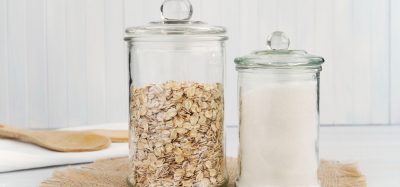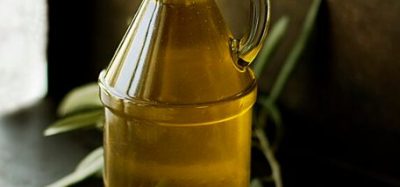Why lowering trans fats and saturates is important for the confectionery industry
- Like
- Digg
- Del
- Tumblr
- VKontakte
- Buffer
- Love This
- Odnoklassniki
- Meneame
- Blogger
- Amazon
- Yahoo Mail
- Gmail
- AOL
- Newsvine
- HackerNews
- Evernote
- MySpace
- Mail.ru
- Viadeo
- Line
- Comments
- Yummly
- SMS
- Viber
- Telegram
- Subscribe
- Skype
- Facebook Messenger
- Kakao
- LiveJournal
- Yammer
- Edgar
- Fintel
- Mix
- Instapaper
- Copy Link
Posted: 11 January 2013 | Helen Bahia, Editor, New Food | No comments yet
Morten Andersen, Technology Specialist at AarhusKarlshamn AB discusses why lowering trans fats and saturates is important for the confectionery industry.


Morten Andersen, Morten Andersen, AarhusHarlshamn AB
Headquarted in Malmö, Sweden, AAK innovates and produces vegetable oil solutions for multiple industries including confectionery fats, bakery, dairy, beauty and personal care.
AAK understands the importance of reducing trans fats and saturates in confectionery for consumers. “Satisfying today’s consumers can be a tough challenge for the confectionery industry,” Morten Andersen, Technology Specialist at AarhusKarlshamn AB explains. “Health is at the forefront of consumer’s minds, but they still demand indulgent products with appealing texture and flavour release. What they really want is to be able to enjoy chocolate products without worrying about the fat composition.”


Morten Andersen, Morten Andersen, AarhusHarlshamn AB
With confectionery manufacturers under increasing pressure from both their customers and regulators to reduce the trans fats and saturates content of their products, AAK has responded to the call with their product range. “The initial focus was on the reduction of trans fats, which adversely affect the composition and content of the various blood cholesterol types and are believed to lead to an increased risk of coronary heart disease,” says Andersen. High trans fats in confectionery products were replaced by low trans or un-hydrogenated fat alternatives. In most cases, this change was achieved by replacing the trans with saturates to ensure the texture and oxidative stability of the alternative was not com – promised. Chocolate alternatives based on high trans cocoa butter replacers were changed to low trans alternatives or non trans cocoa butter substi tutes or chocolate super coatings based on cocoa butter equivalents.”
As most confectionery products now contain less than one per cent trans fats, the focus is now on the reduction of saturates. “At AAK, we have taken steps to meet this new challenge,” Andersen continues. “Firstly, we have brought lauric chocolate coatings with a reduced content of saturated fatty acids (SAFA) to market, and secondly, we have developed the CHOCOFILLTM LS range of filling fats where the saturated fatty acid content has been reduced without adversely affecting their textural properties. ” The nutritional trend towards cleaner labelling and lower SAFA content has opened the door to a range of opportunities for the market. For decades, hydrogenated palm kernel fractions have been used by the confectionery industry as a non-temper, low cost alternative to cocoa butter,” says Andersen. “With a fast setting time, which contributes to high process output and good gloss retention, which has established CBSs as an excellent alternative to cocoa butter in a wide range of applications.” However, the fully hydrogenated components resulted in a saturated fatty acids content of approximately 94g SAFA/100g fat. “This phenomenon raised new technological challenges, as confectionery manufacturers demand the same product functionalities alongside the request for a reduction in SAFA content for the confectionery fat. Using new technology, AAK’s NPD experts made it possible to reduce SAFA to less than 75g SAFA/100g fat in the lauric compound fat. These findings resulted in the launch of CEBESTM LS 75 – a non-hydrogenated lauric coating fat with a reduced content of SAFA that brings an improved nutritional profile to chocolate coatings without com promising on other parameters.”
“For a chocolate manufacturer, setting time in the cooling tunnel and gloss retention are two of the most important parameters for a CBS,” explains Andersen. “Therefore, AAK notes that CEBESTM LS 75 provides similar setting time and gloss retention as CEBESTM NH 85. CEBESTM LS 75 is highly suited for coating applications where setting time and nutritional awareness are top priorities for a chocolate manufacturer and it can be labelled as vegetable fat. From AAK’s range of filling fats, we market the lower saturates filling fat, CHOCOFILLTM LS 35. CHOCOFILLTM LS 35 is an unhydrogenated, nonlauric fat with a saturates content of 37 per cent which maintains the hardness of the filling.”
As an innovator and solution provider of vegetable oils, AAK endeavours to make a clear difference in raw material sourcing both to the environment and to the local communities where raw materials are harvested. “At AAK, sustainable develop ment is fundamental to our business,” Andersen discloses. “Hand-in-hand with social and environmental responsibility, financial growth is key to our continued development and future success. This is what we mean by ‘responsible growth’. We believe that leading sustainability in our everyday activities helps us reach our vision of being the first choice in value-added vegetable oil solutions. Proactive work with our supply chains is behind the development of sustainable solutions.”








